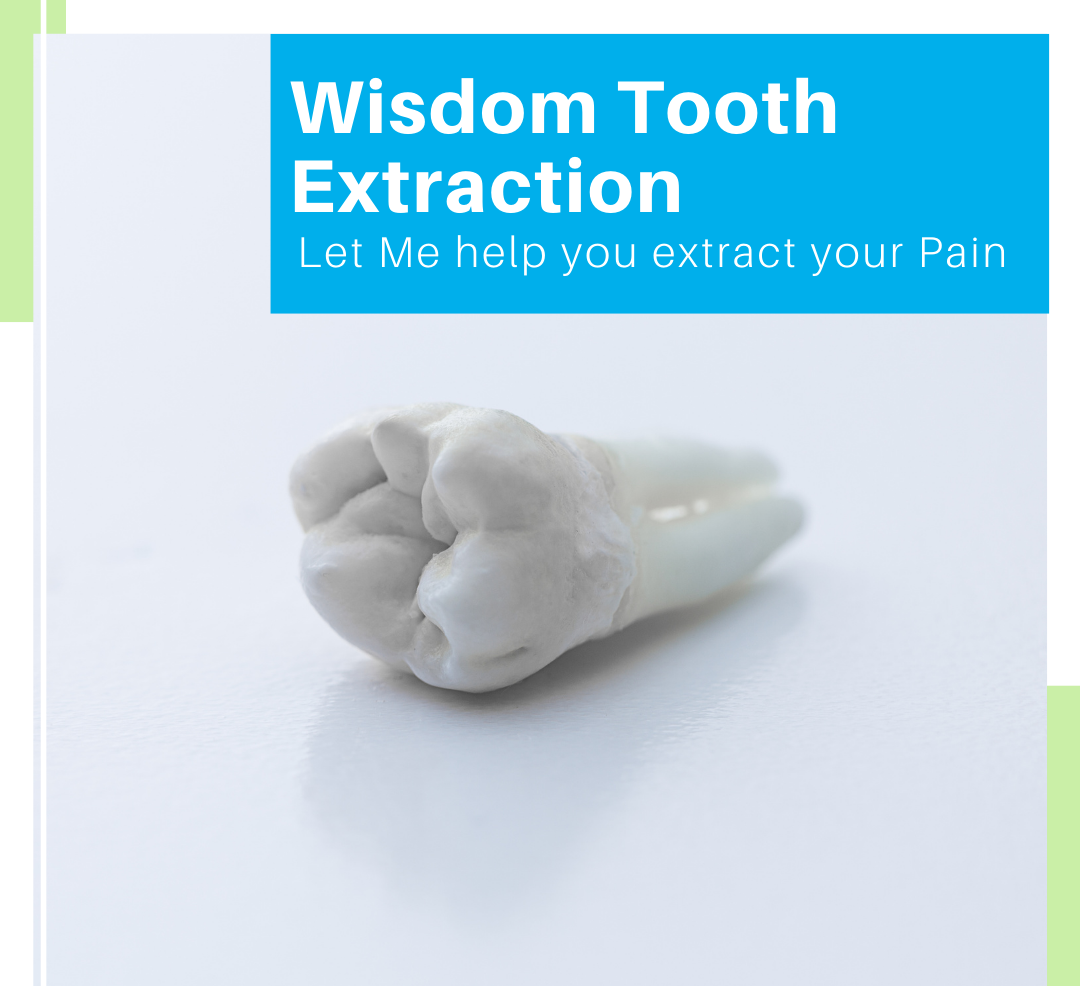


Grow at an angle toward the next tooth (second molar)
Grow at an angle toward the back of the mouth
Grow at a right angle to the other teeth, as if the wisdom tooth is "lying down" within the jawbone
Grow straight up or down like other teeth but stay trapped within the jawbone
Pain
Trapping food and debris behind the wisdom tooth
Infection or gum disease (periodontal disease)
Tooth decay in a partially erupted wisdom tooth
Damage to a nearby tooth or surrounding bone
Development of a fluid-filled sac (cyst) around the wisdom tooth
Complications with orthodontic treatments to straighten other teeth
Local anaesthesia. Your dentist administers local anaesthesia near the site of each extraction.
An incision in the gum tissue to expose the tooth and bone
Removal of bone that blocks access to the tooth root
Tooth removal
Stitches may be needed to close the wound and promote healing, though this isn't always necessary
A compress is placed over the extraction site to control bleeding and to help a blood clot form

My mother is 95 yrs and bedridden. Very few amongst Doctors that too MD who agree to home visit. Dr.Khanna agreed considering the age and condition of the patient. He is full of empathy and care for the patient over and above being very competent and professional. Rare combination indeed. We are lucky his clinic is in our neighbourhood.

It feels like home... meaning comfortable whenever we visit. Dr. Binti has a way of doing all that is necessary without us as patients realising it. Recommended to all as the pricing is reasonable and besides quality services are available at almost ones doorstep.

Excellent service. Dr Ashok Khanna, with his vast experience of many decades, inspires confidence in his patients. He visited my home at short notice to examine my mother, twice, and always followed up on call to enquire on her progress, which is now rare to come across these days. Will strongly recommend him to anyone who lives in the area. His diagnosis and treatment are accurate and fair.

I went to Healthchakra Clinic for my child's dental treatment of tooth extraction and root canal, and what an amazing dentist!
Dr. BINTI was very enthusiastic about her work; she was treated as if she were a family member. I desperately needed a dentist I could rely on. I was quite pleased with the outcome of my child's dental work. Initially, my child was terrified, but I am grateful to Dr. BINTI for managing the matter so professionally.

The Treatment was good done by doctor Binti. Quality work in reasonale pricing. Place is also at good location

I have been visiting Health Chakra since a long time. The doctors are great. Their treatment is very good. Appoinment timming are also maintained very well with no unnecessary waiting time. Highly recommended

Great dentist, great staff and place is very hygienic. I am always satisfied with the treatment I receive, Dr Sharmin always makes sure to explain thoroughly, would highly recommend HC, the team is very professional and great work always.

I have been a patient of Dr Khanna since 2011 and have had several crowns and bridges fitted. I thank his entire team for a pleasant experience during each of my visits. Kudos to each of them for their patience and attentive care!

I just got my chipped teeth filled and I'll have to admit that the result was just amazing!!! I love the professionalism the patience and the kindness the doctors had. Would highly recommend!!!!

Excellent Experiance
Good Staff
Great

I had a good experience while attending health checkup camp in office premises. I got done dental cleanup for very first time......good doctor, experienced staff and supporting team......I would definitely refer health chakra to my friends and relatives

I had gone for dental checkup. The doctor explained the condition of teeth in detailed manner and suggested corrective steps. Also got the cleaning done. Satisfied with the services

Door step Dental Check-up is one of the best things and primary check and clean up is very quick. Liked the service and Equipments used for the check

I got my teeth cleaned and x-rays done by Dr Bharti in Kharadi clinic of Health chakra. She provided an excellent experience. She made me comfortable and took the time to explain the details of what my treatment plan was going to be. Highly recommend!